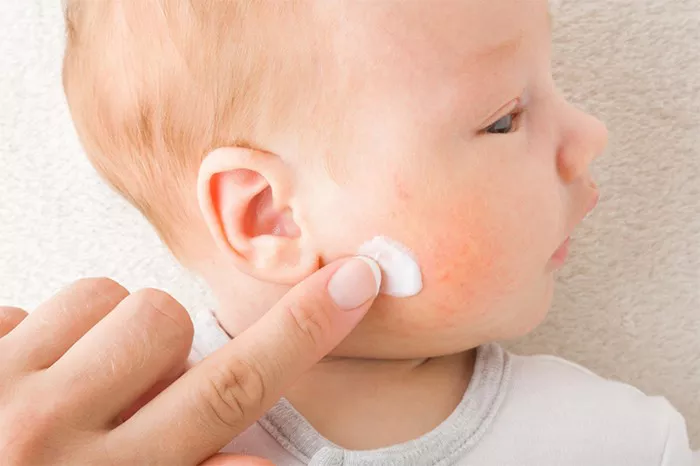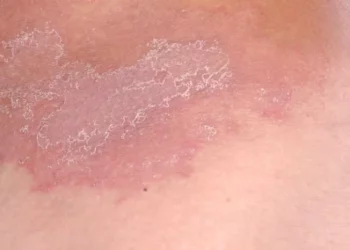Ringworm, despite its misleading name, is not caused by worms but by a group of fungi called dermatophytes. This fungal infection, known medically as tinea, can affect various parts of the body, including the scalp, feet, groin, and other skin areas. One of the hallmark symptoms of ringworm is itching, which can be intense and persistent. Understanding why ringworm itches involves exploring the body’s response to fungal infection, the role of dermatophytes, and the inflammatory processes that are triggered.
Understanding Ringworm and Its Causes
Dermatophytes: The Fungal Culprits
Dermatophytes are a group of fungi that feed on keratin, a protein found in the skin, hair, and nails. The three main genera of dermatophytes that cause ringworm are Trichophyton, Microsporum, and Epidermophyton. These fungi thrive in warm, moist environments, making areas such as locker rooms, swimming pools, and sweaty skin ideal for their growth.
Modes of Transmission
Ringworm is highly contagious and can be spread through direct skin-to-skin contact with an infected person or animal. It can also be contracted by touching contaminated objects like clothing, towels, and surfaces. Fungal spores can survive for long periods, making it easy for the infection to spread.
The Body’s Response to Fungal Infection
Immune System Activation
When dermatophytes invade the skin, the body’s immune system responds to the foreign invaders. The immune response is designed to eliminate the pathogens and involves the activation of various cells and the release of inflammatory mediators. This immune response is crucial for controlling the infection but also contributes to the symptoms experienced, including itching.
Inflammatory Mediators
Inflammatory mediators such as histamine, cytokines, and prostaglandins are released by immune cells in response to the fungal infection. These mediators play a significant role in the itching sensation:
- Histamine: Histamine is a key player in the itch response. It is released by mast cells in the skin and can stimulate nerve endings, leading to the sensation of itching.
- Cytokines: These signaling proteins help regulate the immune response and inflammation. Certain cytokines can enhance the sensitivity of nerve fibers, contributing to itching.
- Prostaglandins: These lipid compounds also participate in the inflammatory response and can sensitize nerve endings, increasing the itch sensation.
Pathophysiology of Itching in Ringworm
Skin Barrier Disruption
The fungi that cause ringworm damage the skin’s barrier as they invade and digest keratin. This disruption can lead to a loss of moisture and further irritation, exacerbating itching. The skin’s protective barrier is crucial for maintaining hydration and preventing irritants from penetrating deeper layers.
Nerve Fiber Activation
The activation of nerve fibers in the skin is a direct cause of the itch sensation. These nerve fibers, known as pruriceptors, are sensitive to various stimuli, including inflammatory mediators and mechanical irritation. When the skin is inflamed and damaged by the fungal infection, these nerve fibers are more easily stimulated, leading to itching.
Psychological and Behavioral Factors
Stress and Itching
Psychological stress can influence the perception of itching and exacerbate the sensation. Stress can also affect the immune system, potentially worsening the body’s response to the fungal infection. People with ringworm may find that their itching becomes more intense during periods of stress.
Scratching and the Itch-Scratch Cycle
Scratching the itchy areas provides temporary relief but can lead to a vicious cycle. Scratching can cause further damage to the skin, leading to increased inflammation and more itching. This cycle can make it difficult to control the symptoms and can prolong the infection.
Clinical Manifestations of Ringworm
Common Symptoms
Ringworm presents with characteristic symptoms, including:
- Red, circular rashes: These rashes often have a clear center and a raised, scaly edge.
- Itching: The intensity of itching can vary but is often significant.
- Scaling and peeling: The affected skin may become dry, flaky, and peel.
- Cracking and blistering: In severe cases, the skin can crack and form blisters.
Variations by Affected Area
The symptoms and severity of itching can vary depending on the location of the infection:
- Tinea Corporis (Body Ringworm): Typically presents with red, itchy, ring-shaped rashes on the body.
- Tinea Pedis (Athlete’s Foot): Affects the feet, particularly between the toes, and is often intensely itchy.
- Tinea Cruris (Jock Itch): Occurs in the groin area, causing significant itching and discomfort.
- Tinea Capitis (Scalp Ringworm): Affects the scalp and can lead to itching, hair loss, and scaling.
SEE ALSO: Does Ringworm Flake When Healing?
Diagnosis and Treatment
Diagnostic Methods
Diagnosing ringworm involves a combination of clinical examination and laboratory tests:
- Clinical Examination: Physicians often recognize the characteristic appearance of ringworm. A Wood’s lamp (ultraviolet light) can sometimes be used to identify fungal infections.
- Microscopic Examination: Skin scrapings or hair samples can be examined under a microscope to identify fungal elements.
- Culture: Fungal cultures can confirm the presence and type of dermatophyte causing the infection.
Treatment Options
Treating ringworm effectively involves antifungal medications and proper skin care:
- Topical Antifungals: Over-the-counter and prescription antifungal creams, lotions, and powders can treat mild to moderate cases of ringworm.
- Oral Antifungals: For more severe or widespread infections, oral antifungal medications may be necessary.
- Skin Care: Keeping the affected area clean and dry is crucial. Avoiding scratching and using soothing lotions can help manage symptoms.
Prevention and Management
Preventative Measures
Preventing ringworm involves good hygiene and avoiding contact with infected individuals or animals:
- Personal Hygiene: Regular handwashing, showering after physical activity, and keeping the skin dry can reduce the risk of infection.
- Avoiding Contaminated Objects: Not sharing personal items like towels, clothing, and grooming tools can help prevent the spread of ringworm.
- Pet Care: Regularly checking and treating pets for fungal infections can prevent transmission to humans.
Managing Itching
Managing the itching associated with ringworm can improve comfort and prevent complications:
- Antihistamines: Over-the-counter antihistamines can reduce itching by blocking histamine receptors.
- Moisturizers: Using gentle, unscented moisturizers can help soothe and protect the skin.
- Cool Compresses: Applying cool compresses to the affected areas can provide temporary relief from itching.
Conclusion
Ringworm is a common fungal infection that can cause significant itching and discomfort. The itching is primarily due to the body’s immune response to the fungal invasion, the release of inflammatory mediators, and the activation of nerve fibers in the skin. Understanding the underlying mechanisms of itching in ringworm can help in managing the symptoms effectively. Preventative measures, prompt diagnosis, and appropriate treatment are crucial in controlling the infection and alleviating the associated itching. By taking steps to maintain good hygiene and manage stress, individuals can reduce their risk of ringworm and its irritating symptoms.
Related Topics:



























